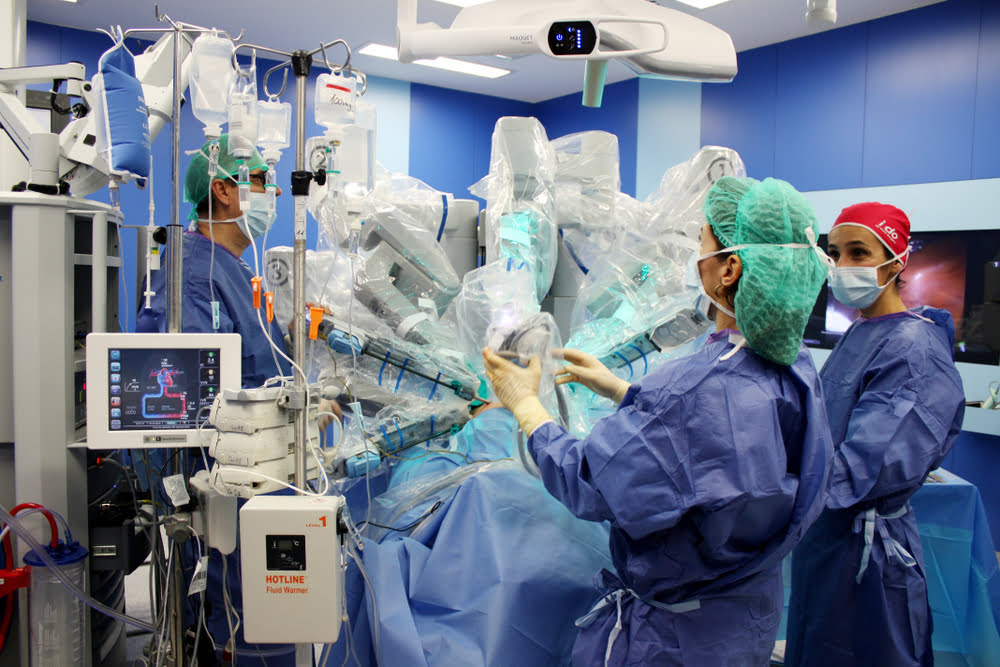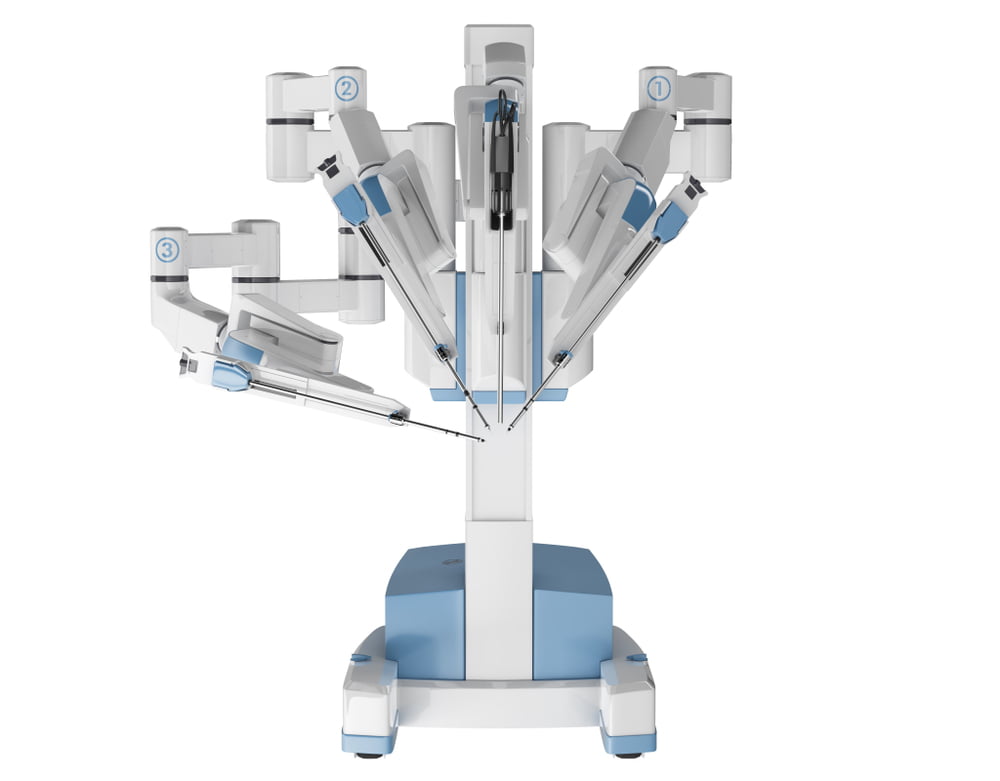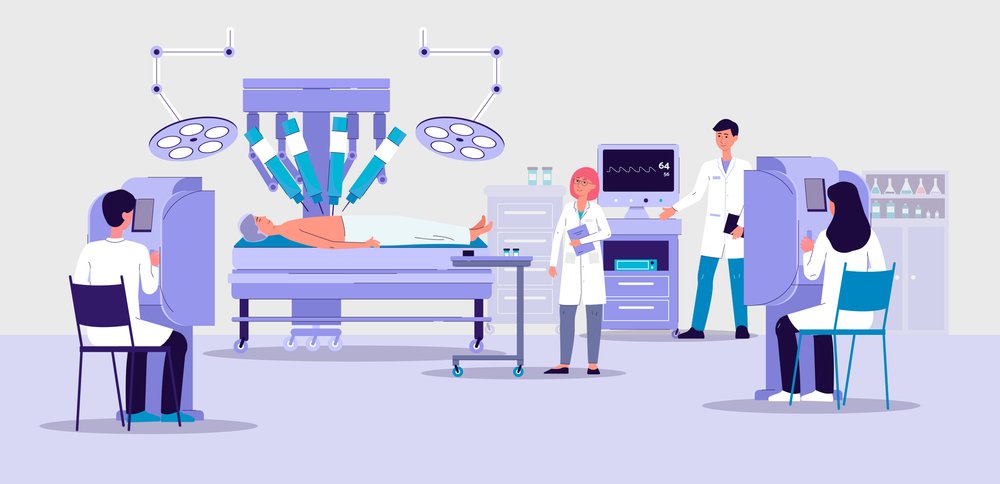Robotic prostatectomy in Türkiye
Robotic prostatectomy is a minimally invasive procedure for the treatment of prostate cancer using the da Vinci surgical robot, an advanced robotic surgical system that allows surgeons to operate on the prostate with improved vision, control, and precision via a magnified 3D view.

What is the da Vinci surgical system?

It is a robotic surgical system made by experts in Intuitive Surgica in 2000 and called it Da Vinci, similar to Leonardo Da Vinci’s study of human anatomy, and designed to facilitate complex surgeries using the minimally invasive methodology, through which the surgeon can control the arms and all the tools from the control room and the Da Vinci system is used Surgical procedures in advanced hospitals, including Turkish hospitals, and their use has become more and more common in operations such as sleeve gastrectomy, hysterectomy, prostate, kidney, uterus, and uterine fibroids, in addition to many other surgeries.
Why robotic prostatectomy?
This new surgical procedure uses a modern minimally invasive surgical system. It helps the surgeon to see the anatomical structures clearly, which leads to an accurate surgical procedure. The surgery has many advantages, including:
- Shorter hospital stay.
- The pains are less.
- Reducing blood loss and blood transfusions.
- No blood donation is required from the patient.
- Less scarring.
- A faster return to normal activities
Details of Robotic Prostate Surgery:
during the operation:
The entire operation is performed without the surgeon’s hands entering the patient’s body cavity. The surgeon sits on a central electronic console and controls precision instruments that provide a range of motion far greater than the human wrist. The procedure begins with anesthetizing the patient and passing miniature, advanced surgical robotic tools through several small punctures in the patient’s abdomen (less than 1 cm across). This gives the surgeon the ability to remove the prostate and adjacent tissues with great accuracy with the help of a three-dimensional endoscope and image processing equipment to provide a magnified view of the delicate structures surrounding the prostate gland, such as nerves, blood vessels, and muscles, and this extreme precision preserves these structures.

After the operation:
Most robotic prostatectomy patients are able to go home within 24 hours after surgery. And return to their normal activities 14 to 21 days after surgery. Some patients are able to resume sexual intercourse in a short time, but regardless of the type of surgery used to remove the prostate. All patients are sterile but the following are expected:
- Post-operative pain: Most patients experience mild pain at the incision sites after the procedure. Pain is relieved by intravenous analgesics or oral analgesics.
- Nausea: Nausea is expected as a side effect of anesthesia, as with any other surgery, for a short period.
- Bladder spasms: The bladder becomes irritated after the procedure and frequent spasms called bladder spasms occur. This can be felt as sharp, intermittent pain or cramps in the lower abdomen for a short time.
- Constipation: Patients experience slowed bowel movements for several days after surgery due to anesthesia. Taking a teaspoon of mineral oil daily at home also helps prevent constipation.
- Urinary catheterization: Patients are placed with a urinary catheter to ensure proper drainage of the bladder. And to facilitate the healing of the area for a certain period, as most patients suffer from some incontinence. However, most patients quickly regain control within 3-6 months after surgery.
- Fatigue: Fatigue is very common after surgery and should subside within a few weeks after surgery.
Care at home:
Bathing: Patients can shower immediately upon discharge from the hospital, but bathtubs or hot tubs are not recommended for the first two weeks as this opens up the incisions and increases the risk of infection.
Activity: Walking 6 times a day for the first two weeks after surgery on a flat surface is highly recommended because prolonged sitting can increase the risk of pneumonia and deep vein thrombosis.
Diet: Patients resume diet after their appetite improves.
Risks of robotic prostatectomy:
Possible risks of robotic-assisted laparoscopic radical prostatectomy include:
- bleeding.
- Infection at the surgical site.
- Damage to nearby tissues or organs.
side effects:
The side effect rates of robotic prostatectomy are similar to traditional open surgical methods and the most common side effects include:
- Enuresis (inability to control urine): Urinary incontinence is possible after robotic prostatectomy, but this side effect usually improves over time.
- Erectile Dysfunction (ED): Surgeons use nerve-sparing techniques during robotic prostatectomy to minimize the surgical impact on sexual function, but the return of erectile function after prostatectomy depends on the patient’s age, degree of sexual function before surgery, percentage of nerves spared during surgery, and recovery time after surgery Surgery and the presence of previous conditions such as high blood pressure, heart disease, diabetes, obesity, smoking and high cholesterol.
Robotic prostatectomy in Türkiye
The medical staff of surgical teams, doctors and consultants in REHABTÜRK can offer the best treatment options and free consultations by striving to keep abreast of the latest medical technologies and methods.
